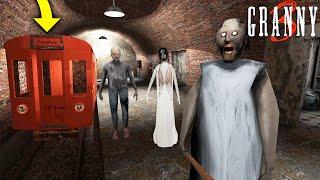
RUN Test - Non Parametric Test for Small and Large Samples
Комментарии:

THANKYOU SO MUCH
Ответить
Excellent explaination sir 👌👌
Ответить
Hlo sir, aap kaha thein itno dino se, aapka video se mujhe bhut kuch sikhne ko mil rha
Thank ❤️❤️❤️❤️❤️❤️❤️❤️❤️❤️❤️❤️❤️❤️❤️❤️❤️ you so much sir, pls add me in any telegram group , i need non parametric test based simle problem book, pls help sir

Sir ye table kha se melegi
Ответить
I am not able to find it anywhere
Ответить
Thanks a lot Sir♥️
Ответить
We accept Null hypothesis in the last question.. Which means sequence is random
Ответить
thanx a lot… well explained
Ответить
thanx… well explained
Ответить
Excellent
Ответить
Thank you sir 🙏
Ответить
Very nice explanation, thank u sir
Ответить
What if the strings are alphanumberic
Ответить
Sir I have some dout
In example 1st we calculate length of run of scenario 1 and scenario 2nd but ater some time you say that it's not a run .
So, sir if it is not a run then how we calculate length of run ???

Finally my doubts are cleared
Thank u so much sir

Thank you)
Ответить
Thankyou so much sir! It was so helpful
Ответить
Thanks sir whole topic covered 👏👏👌
Ответить
Sir, i liked you video, however, i could not understand the logic behind using formula for checking randomness during large sample .
Plz explain formula in detail
Calculating mean, SD with and then Z in this case.
Thanks

What is the formula for Run test sir
Ответить
Super helpful!
Ответить
Sir, could you please tell how the median is 50 in the marks obtained problem in 12th minute of video? Shouldn't we arrange the numbers in ascending order and take the middle value?
Ответить
Sir what if it more than 2 samples
Ответить
Sir, what if n1=4 and n2=4 then what will the critical values from run table (for small sample)
Ответить
In do yourself it is a small sample and we reject H0 is it correct sir ??
Ответить
Sir, if median value is one of the data value, then what symbol would be assign to that data value?
Ответить
Wow!
Ответить
In the last question we get, n1 = 16, n2 = 14 & G = 22 and since both n1&n2<20 so it is a small sample. The critical values at alpha=0.05 l.o.s. are, G(lower)=10 & G(upper) =22. Thus, 10 < 22 <= 22 ,i.e., G(lower) < G <= G(upper). So, we fail to reject the null hypothesis or we can say that we accept the null hypothesis at alpha=0.05 l.o.s. Please tell is this correct?
Ответить
Bhai Hindi me bolo....
Ответить
Nice explanation 👍
Ответить
Sir tusi bohut bout great ho
Ответить
legend
Ответить
very excellent teaching..thank you sir....
Ответить
what to if there are numbers with more that 20 samples? how to find the runs ? medium or mean?
Ответить
👍 good presentation Thankyou
Ответить
Thank you sir..all clear about Run test
Ответить
This was a good lesson
Ответить
Great lecture❤
Ответить
Your lectures are presented in a powerpoint slide in our university. Its one of the best university of Bangladesh.
Ответить
Median 7.5 aai h aur data ki 10 values 7.5 hi h to Kiya un values ko count nahi karu
Ответить
thanku for a great video...
Ответить
very well explained. thank you sir
Ответить
Awesome
Ответить
Thank you so much sir for your contribution towards our education ❤
Ответить
Excellent teaching sir thank you sir
Ответить
Very well explained. As a Statistics professor I really marked it 100%..
Ответить
Sir please provide examination notes
Ответить


![Recruits: Irish Army | Documentary [2/2] Original Recruits: Irish Army | Documentary [2/2] Original](https://rtube.cc/img/upload/MFNoRDNra0RobTk.jpg)







